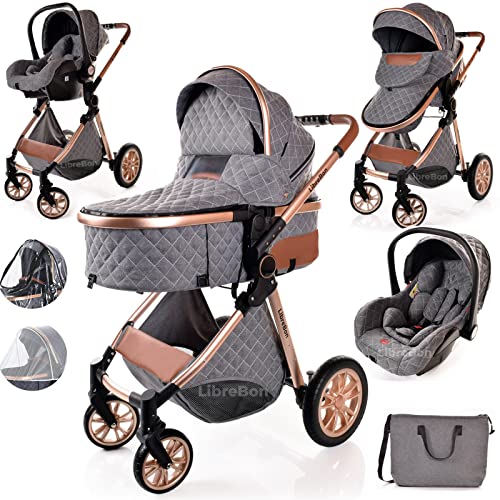Pram or Pushchair: A Comprehensive Guide for New Parents
Choosing the ideal mode of transport for young kids is one of the first substantial choices new moms and dads deal with. With numerous alternatives on the market, the argument between prams and pushchairs can be bewildering. This short article will provide comprehensive insights into the distinctions between prams and pushchairs, their requirements, benefits and drawbacks, and what to think about before buying.
Comprehending Prams and Pushchairs
At its core, the choice in between a pram and a pushchair depends on their design and planned usage.
Meanings:
- Pram: A pram, brief for "perambulator," is created mostly for newborns. It includes a flat, carrycot-style seat that permits the baby to lie down entirely flat. Prams are often more elegant and are meant for transporting infants who are not yet sitting up independently.
- Pushchair: A pushchair, likewise understood as a stroller, is designed for older infants and toddlers who can sit up. Pushchairs typically have an upright seat and may not recline entirely flat, although numerous models now provide adjustable reclining options for comfort.
Key Differences:
| Feature | Pram | Pushchair |
|---|---|---|
| Age of Use | Newborn to about 6 months | 6 months to 4 years or more |
| Seating Position | Flat, resting | Upright or slightly reclined |
| Weight | Usually heavier | Generally lighter |
| Mobility | Less portable due to weight | More portable and much easier to fold |
| Usage Case | Brief walks, leisurely strolls | Daily usage, errands, longer getaways |
Benefits and Disadvantages
Pram
Advantages:
- Comfort for Newborns: Provides a flat surface favorable to a newborn's developmental requirements.
- Stylish Designs: Many prams featured stylish designs, providing a touch of luxury.
- Storage Space: Sometimes include larger storage choices below.
Downsides:
- Weight: Generally heavier and bulkier than pushchairs.
- Minimal Usage: Suitable just for newborns and babies who can not sit up.
Pushchair
Advantages:
- Versatility: Suitable for older babies and young children, often accommodating them for numerous years.
- Lightweight and Portable: Easier to fold and transport, making them perfect for hectic parents.
- Configurable Options: Many pushchairs have adjustable seats and attachments for car seats and carrycots.
Disadvantages:
- Comfort for Newborns: Not constantly appropriate for infants in the early months without an appropriate insert.
- Less Luxurious: Often perceived as less elegant compared to prams.
Making the Right Choice
When it concerns choosing between a pram and pushchair, numerous aspects should be thought about:
1. Way of life:
- If parents often make long journeys or go for strolls, a pram might be preferential.
- If they need to navigate through city streets or take public transport, a light-weight pushchair may be more appropriate.
2. Budget:
Pricing can differ widely. Understanding your monetary limitations will assist focus on options that fulfill both visual and useful requirements.
3. Adaptability:
Some progressive options include travel systems that enable parents to shift from a car seat to a pushchair with the exact same base, using maximum flexibility.
4. Storage Space:
A pram may take up more space in a lorry or in the house, while a pushchair's ability to fold down can be a significant benefit in tighter spaces.
Frequently asked questions
Q1: Can I use a pushchair for newborns?
A1: Some pushchairs come with bassinet accessories or totally reclining seats, making them appropriate for newborns. Nevertheless, it's vital to inspect the specs before usage.
Q2: How do I choose the right design?
A2: Consider your way of life, spending plan, and the features you prioritize, such as weight, mobility, and storage choices.
Q3: Are prams and pushchairs safe for my baby?
A3: Yes, both prams and pushchairs are created with security features. Search for models with a 5-point harness, tough brakes, and safe frames.
Q4: How long can I utilize a pram for?
A4: A pram is typically suitable till a baby can sit up unassisted, typically around 6 months.
Q5: What are travel systems?
A5: Travel systems are mixes of a car seat and a pushchair that work in tandem, enabling for easy shifts from automobile to pushchair without requiring to eliminate the baby.
Picking in between a pram and a pushchair eventually boils down to the requirements and way of life choices of each household. visit the following internet page provide comfort and design for infants, while pushchairs provide versatility and ease for older babies and young children. By carefully considering individual circumstances and requirements, moms and dads can make an educated choice that will guarantee safe and satisfying getaways with their little ones.
In the end, whether one go with a stylish pram or a useful pushchair, the main aim remains the same-- guaranteeing convenience and safety for the child while assisting in convenience for moms and dads.

